Why does my ProMinent DULCOMETER Compact Controller display 'pH/mV RANGE'?
- PPamela Joseph MDAug 3, 2025
The 'pH/mV RANGE' error on your ProMinent Controller can appear if the input voltage is either too low or too high, indicating a fault current.
Why does my ProMinent DULCOMETER Compact Controller display 'pH/mV RANGE'?
The 'pH/mV RANGE' error on your ProMinent Controller can appear if the input voltage is either too low or too high, indicating a fault current.
What does 'NO CAL' mean on my ProMinent DULCOMETER Compact?
The 'NO CAL' message on your ProMinent Controller means that no valid user calibration exists.
What does 'CHECK? TIME' mean on my ProMinent DULCOMETER Compact Controller?
The 'CHECK? TIME' message on your ProMinent Controller means that the control checkout time has elapsed.
What does 'PROBE ERR' mean on my ProMinent DULCOMETER Compact?
The 'PROBE ERR' message on your ProMinent Controller indicates a sensor break, assuming pH sensor monitoring outputs are activated.
What does it mean when my ProMinent Controller displays 'NO PROBE'?
The 'NO PROBE' message on your ProMinent Controller indicates that there is no sensor detected, assuming pH sensor monitoring outputs are activated.
Why does my ProMinent Controller display 'T RANGE'?
The 'T RANGE' error on your ProMinent Controller indicates that the measured temperature is either beneath or above the measuring range, which can result in a fault current.
Details available mounting types like wall, pipe, or control panel.
Lists the different physical variables the controller can measure.
Specifies the power input requirements and frequency range.
Lists relevant product certifications and available operating instruction languages.
Explains the meaning of DANGER, WARNING, CAUTION, and NOTICE symbols.
Provides crucial safety warnings and precautions for electrical and operational safety.
Defines the device's designed purpose, allowed applications, and prohibited modifications.
Specifies the required expertise and training for personnel operating the device.
Lists all components included in the standard product package.
Covers physical installation procedures for walls, pipes, and control panels.
Details electrical connections, cable specifications, and wiring diagrams.
Guidelines for protecting the controller when connecting inductive loads.
Specifies the need for shielded sensor cables and correct connection methods.
Guides users on choosing the correct sensor type and its impact on device settings.
Outlines the steps for the first-time startup and basic configuration of the controller.
Details how to configure control loop parameters during the commissioning process.
Explains sensor selection and automatic measurement range adjustment.
Adjusting temperature compensation and reference temperature for accurate readings.
Procedures for calibrating the conductivity sensor's cell constant and temperature coefficient.
Setting upper/lower limits, hysteresis, and time limits for control and alarms.
Adjusting P/PID control parameters, setpoints, and timing for optimal performance.
Setting up sensor parameters, cable length, digital inputs, and contact functions.
Setting up relay functions (alarm, limit, dosing) and analog mA output signals.
Managing device settings like password, restarts, and factory resets.
Explains operational states like STOP, PAUSE/HOLD, CAL, and OPERATION.
How to start, stop, and resume the controller's operation.
Understanding how hysteresis affects limit value triggers and control stability.
How temperature influences measurements and the methods for compensation.
Details the configuration and triggering of the alarm relay for fault notification.
Details the functionality for recording and displaying recent errors.
Comprehensive list of error codes, their causes, and troubleshooting guidance.
Specifies operating and storage temperature and humidity limits for the device.
Provides the physical size and weight specifications of the controller.
Lists the materials used for construction of the housing and seals.
Details voltage range, frequency, and power consumption for power supply.
Outlines the display ranges and precision for various measured variables.
Details mA output signal ranges, fault behavior, and load capacity.
Details available mounting types like wall, pipe, or control panel.
Lists the different physical variables the controller can measure.
Specifies the power input requirements and frequency range.
Lists relevant product certifications and available operating instruction languages.
Explains the meaning of DANGER, WARNING, CAUTION, and NOTICE symbols.
Provides crucial safety warnings and precautions for electrical and operational safety.
Defines the device's designed purpose, allowed applications, and prohibited modifications.
Specifies the required expertise and training for personnel operating the device.
Lists all components included in the standard product package.
Covers physical installation procedures for walls, pipes, and control panels.
Details electrical connections, cable specifications, and wiring diagrams.
Guidelines for protecting the controller when connecting inductive loads.
Specifies the need for shielded sensor cables and correct connection methods.
Guides users on choosing the correct sensor type and its impact on device settings.
Outlines the steps for the first-time startup and basic configuration of the controller.
Details how to configure control loop parameters during the commissioning process.
Explains sensor selection and automatic measurement range adjustment.
Adjusting temperature compensation and reference temperature for accurate readings.
Procedures for calibrating the conductivity sensor's cell constant and temperature coefficient.
Setting upper/lower limits, hysteresis, and time limits for control and alarms.
Adjusting P/PID control parameters, setpoints, and timing for optimal performance.
Setting up sensor parameters, cable length, digital inputs, and contact functions.
Setting up relay functions (alarm, limit, dosing) and analog mA output signals.
Managing device settings like password, restarts, and factory resets.
Explains operational states like STOP, PAUSE/HOLD, CAL, and OPERATION.
How to start, stop, and resume the controller's operation.
Understanding how hysteresis affects limit value triggers and control stability.
How temperature influences measurements and the methods for compensation.
Details the configuration and triggering of the alarm relay for fault notification.
Details the functionality for recording and displaying recent errors.
Comprehensive list of error codes, their causes, and troubleshooting guidance.
Specifies operating and storage temperature and humidity limits for the device.
Provides the physical size and weight specifications of the controller.
Lists the materials used for construction of the housing and seals.
Details voltage range, frequency, and power consumption for power supply.
Outlines the display ranges and precision for various measured variables.
Details mA output signal ranges, fault behavior, and load capacity.
| Brand | ProMinent |
|---|---|
| Model | DULCOMETER Compact |
| Category | Controller |
| Language | English |

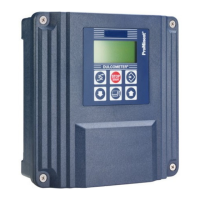


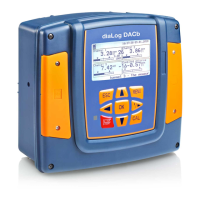
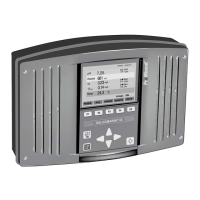
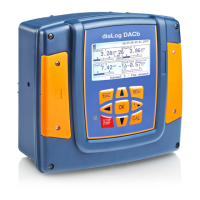
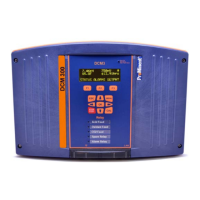
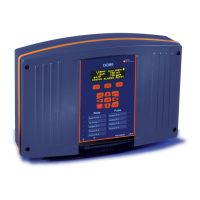
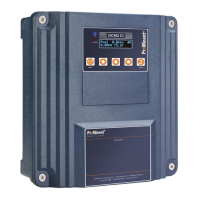
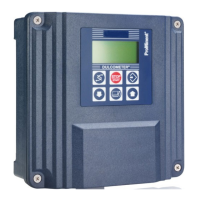

